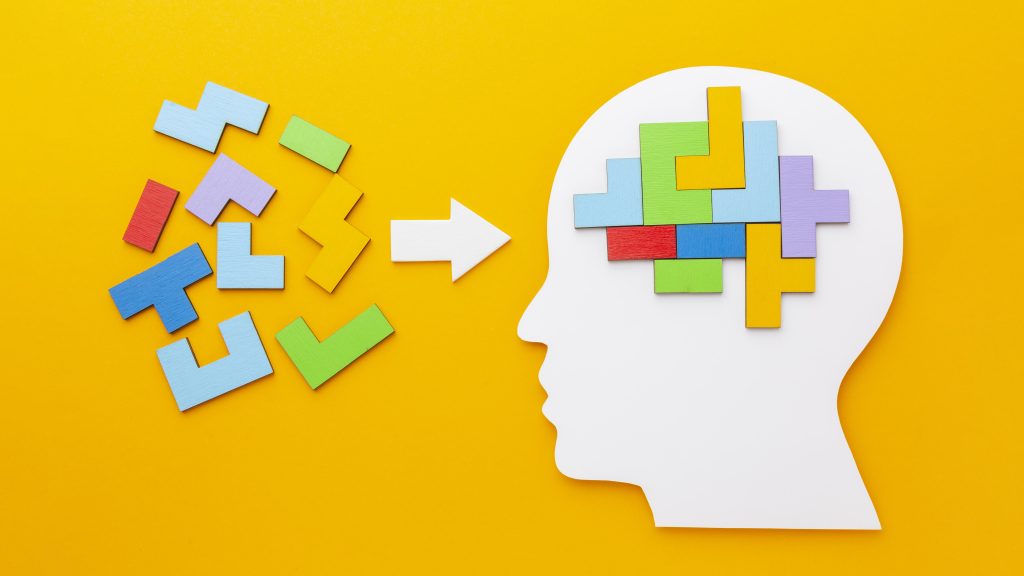You may be wondering, “What are the six areas of cognitive psychology and why should I care?” Well, cognitive psychology is not just some abstract concept that only academics find interesting. It actually plays a crucial role in understanding how our minds work and how we interact with the world around us. By exploring attention, memory, perception, thinking, problem-solving, language use, and creativity, we can gain valuable insights into the complex processes that shape our thoughts, actions, and decision-making. But that’s not all. These insights also have practical applications in areas such as user experience design, where understanding cognitive psychology can help create designs that are both visually appealing and user-friendly. So, if you’re curious about how your mind works and how it impacts your everyday experiences, keep reading to uncover the fascinating world of cognitive psychology.
Attention and Perception
Attention and perception are vital components of human cognition. They shape how we process and interpret information from the world around us. Cognitive biases, selective attention, visual perception, attentional processes, and cognitive load all contribute to our understanding of attention and perception.
Cognitive biases, such as confirmation bias or availability bias, influence how we pay attention to certain information while ignoring others. Our selective attention allows us to focus on specific stimuli while filtering out distractions. Visual perception, on the other hand, involves how our brain interprets and makes sense of the visual information we receive. It includes processes like object recognition, depth perception, and color perception.
Attentional processes refer to how we allocate our attentional resources and switch between different tasks or stimuli. Cognitive load, which can be influenced by the complexity or amount of information presented, affects our ability to pay attention and process information effectively.
Understanding attention and perception is crucial in UX design. By considering cognitive biases, designing for selective attention, and optimizing visual perception, designers can create user interfaces that capture and maintain users’ attention. Additionally, understanding attentional processes and managing cognitive load can help designers create interfaces that are intuitive, easy to navigate, and enhance the overall user experience.
Memory and Learning
Memory and learning play crucial roles in human cognition and are fundamental processes that shape our ability to acquire, store, and retrieve information. Memory recall refers to the ability to retrieve information that has been previously encoded and stored in the memory. Learning strategies are techniques and approaches that individuals use to enhance their learning and improve their memory encoding and retrieval. Memory encoding is the process of transforming information into a format that can be stored in the memory. Memory consolidation is the process by which memories become stable and are strengthened over time. Memory retrieval is the process of accessing stored information from the memory and bringing it into conscious awareness. Understanding these processes is essential for optimizing learning and memory performance. By employing effective learning strategies and improving memory encoding and retrieval, individuals can enhance their ability to acquire and retain information, leading to improved cognitive functioning and performance in various domains.
Language and Communication
Language and communication are essential aspects of human cognition, enabling you to express your thoughts, convey information, and interact with others effectively. Cognitive processing plays a crucial role in linguistic development, as individuals acquire language and learn to communicate. Language acquisition involves the cognitive processes of perception, attention, memory, and problem-solving. Cognitive linguistics explores how cognitive processes shape language and how language influences cognitive processes.
However, communication barriers can hinder effective language use. These barriers include language disorders, cultural differences, and lack of language proficiency. Understanding the cognitive aspects of language can help identify and overcome these barriers, improving communication and promoting inclusivity.
Cognitive psychologists study the processing and comprehension of language, including how individuals understand and produce speech, read and write, and interpret meaning. They investigate the mental processes involved in language comprehension, such as syntactic parsing, semantic processing, and discourse comprehension.
Problem Solving and Decision Making
When faced with a problem or decision, your cognitive processes come into play, enabling you to analyze, strategize, and determine the most effective course of action. In problem solving and decision making, there are various techniques and strategies that can be applied. Here is a breakdown of some key aspects:
Problem Solving Techniques:
- Define the problem clearly and understand its underlying causes.
- Generate potential solutions or alternatives.
- Evaluate the pros and cons of each solution.
- Select the most appropriate solution.
- Implement the chosen solution.
- Evaluate the outcome and make adjustments if necessary.
Decision Making Strategies:
- Rational decision making involves systematically analyzing options and choosing the best one based on logic and evidence.
- Intuitive decision making relies on gut feelings and past experiences to make quick decisions.
- Bounded rationality acknowledges that decision makers have limited time, information, and cognitive abilities, so they make satisfactory decisions that are “good enough”.
Cognitive Biases:
- Confirmation bias: favoring information that confirms preexisting beliefs.
- Availability heuristic: relying on easily accessible information to make judgments.
- Anchoring bias: relying heavily on the first piece of information encountered.
Problem Solving Models:
- The four-step problem-solving model: define the problem, generate potential solutions, evaluate and select the best solution, and implement and evaluate the outcome.
Cognitive Development
Cognitive development is the process through which individuals acquire and enhance their cognitive abilities, such as problem-solving, decision-making, and critical thinking skills. There are several cognitive development theories that explain how these abilities develop throughout different stages of life. In children, cognitive development is characterized by rapid growth in areas such as language acquisition, memory, and problem-solving. Piaget’s theory of cognitive development suggests that children go through four stages: sensorimotor, preoperational, concrete operational, and formal operational.
During adolescence, cognitive development continues to progress, with individuals gaining more advanced reasoning abilities, abstract thinking skills, and the ability to think hypothetically. In adulthood, cognitive development focuses on maintaining and enhancing cognitive abilities acquired earlier in life. There is a growing body of research that suggests that cognitive abilities can be improved and maintained through engaging in intellectually stimulating activities and maintaining an active lifestyle.
Understanding cognitive development is essential for individuals working in fields such as education, psychology, and healthcare. It provides insights into how individuals acquire knowledge, solve problems, and make decisions at different stages of life. By understanding these developmental processes, professionals can design interventions and strategies that promote optimal cognitive development and well-being in individuals of all ages.
Emotion and Motivation
Emotion and motivation play crucial roles in shaping human behavior and decision-making processes. Understanding these psychological factors is essential in cognitive psychology and has significant implications for UX design. Here are some key points to consider:
- Emotional Intelligence:
- Emotional intelligence refers to the ability to understand and manage one’s own emotions and the emotions of others.
- It impacts decision-making, problem-solving, and interpersonal relationships.
- UX designers can leverage emotional intelligence to create emotionally engaging and user-centered designs.
- Intrinsic Motivation:
- Intrinsic motivation refers to engaging in an activity for its inherent satisfaction rather than for external rewards.
- UX designers can tap into intrinsic motivation by designing experiences that provide a sense of autonomy, competence, and relatedness.
- This can enhance user engagement and satisfaction.
- Cognitive Biases:
- Cognitive biases are systematic patterns of deviation from rationality in decision-making.
- UX designers need to be aware of these biases to avoid design pitfalls and create intuitive and unbiased user experiences.
- Affective Neuroscience:
- Affective neuroscience explores the neural basis of emotions and their impact on behavior.
- Understanding the neuroscience behind emotions can help UX designers create designs that elicit specific emotional responses.
- Self-Regulation:
- Self-regulation refers to the ability to control and regulate one’s own thoughts, emotions, and behaviors.
- UX designers can incorporate self-regulation techniques, such as feedback and goal-setting, to promote user engagement and behavior change.
Social Cognition and Interaction
Social cognition and interaction play a crucial role in understanding human behavior and decision-making processes, which are key aspects of cognitive psychology. Social cognition refers to how individuals perceive, interpret, and understand social information, while social interaction focuses on the dynamics and processes involved in interpersonal relationships.
In the realm of social cognition, individuals rely on various cues, including nonverbal communication, to make sense of social situations. These cues can include facial expressions, body language, and tone of voice, all of which contribute to the understanding of others’ emotions and intentions. Additionally, social cognition involves the ability to infer the thoughts and beliefs of others, known as theory of mind.
Social interaction encompasses the influence that individuals have on each other within a group setting. This includes the study of social influence, which examines how individuals are affected by the actions and opinions of others. Group dynamics also play a role in social interaction, as individuals navigate power dynamics, roles, and norms within a group.

